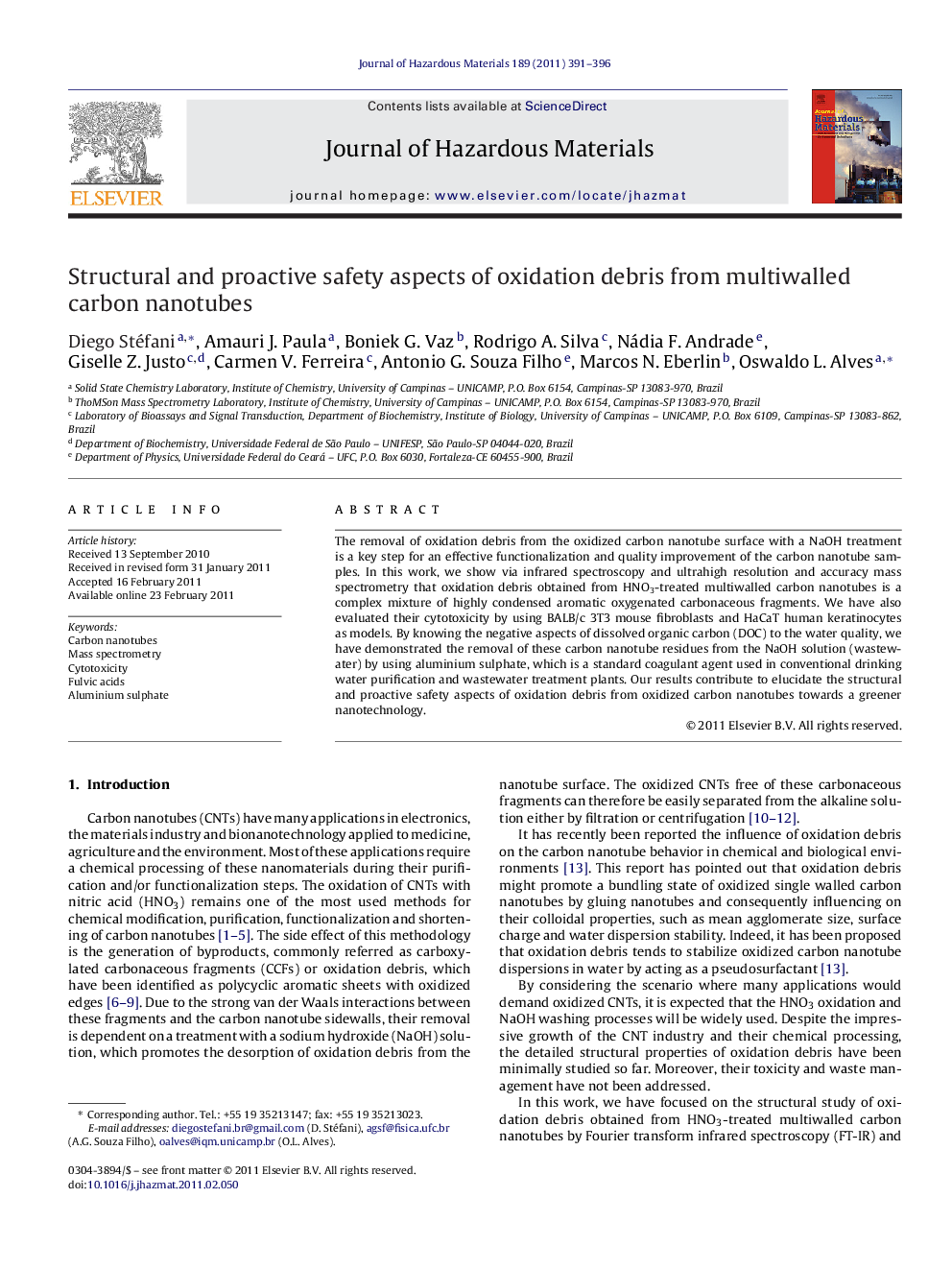| Article ID | Journal | Published Year | Pages | File Type |
|---|---|---|---|---|
| 579385 | Journal of Hazardous Materials | 2011 | 6 Pages |
Abstract
The removal of oxidation debris from the oxidized carbon nanotube surface with a NaOH treatment is a key step for an effective functionalization and quality improvement of the carbon nanotube samples. In this work, we show via infrared spectroscopy and ultrahigh resolution and accuracy mass spectrometry that oxidation debris obtained from HNO3-treated multiwalled carbon nanotubes is a complex mixture of highly condensed aromatic oxygenated carbonaceous fragments. We have also evaluated their cytotoxicity by using BALB/c 3T3 mouse fibroblasts and HaCaT human keratinocytes as models. By knowing the negative aspects of dissolved organic carbon (DOC) to the water quality, we have demonstrated the removal of these carbon nanotube residues from the NaOH solution (wastewater) by using aluminium sulphate, which is a standard coagulant agent used in conventional drinking water purification and wastewater treatment plants. Our results contribute to elucidate the structural and proactive safety aspects of oxidation debris from oxidized carbon nanotubes towards a greener nanotechnology.
Related Topics
Physical Sciences and Engineering
Chemical Engineering
Chemical Health and Safety
Authors
Diego Stéfani, Amauri J. Paula, Boniek G. Vaz, Rodrigo A. Silva, Nádia F. Andrade, Giselle Z. Justo, Carmen V. Ferreira, Antonio G. Souza Filho, Marcos N. Eberlin, Oswaldo L. Alves,
